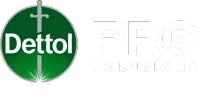

8 Easy Ways Small Restaurants Can Draw Diners Again
A survey conducted for the food and beverages industry in the Gulf Cooperation Council (GCC) countries in 2020 post the COVID-19 pandemic, found 52 percent of respondents in the United Arab Emirates stating that they were going to dine out less frequently than they used to1. Many diners still feel unsure of the hygiene and cleanliness of establishments, and as business owners you may be unsure of what measures would really improve diner confidence. Here are a few ways you can entice diners back.

During the pandemic, it’s more crucial than ever for restaurateurs and café owners to ensure hygiene standards follow food safety regulations. Failure to put in place, or to adhere to appropriate hygiene procedures can result in contamination and the spread of pathogens throughout the facility.
This can go on to have an enormous social and economic impact on a business, ranging from damage to your brand’s reputation to loss of profits, and possibly closure of premises. Your strategy should focus on more than just the requirement for masking and social distancing. Your measures will impress customers, and be effective, when they are built on using the right disinfecting practices and hand-hygiene protocols and establishing an overall culture of food safety. The quicker you deploy these steps, the faster you can help reduce risks.
HOT TIP: Knowing that some customers or employees may forget to bring a mask or sanitiser, consider providing these free of charge.

Opt for these smart cleaning and sanitisation rules
Enabling servers to thoroughly clean and sanitise tables and counters using appropriate disinfecting products can protect both staff and diners from harmful germs.
- Train your staff to effectively sanitise tables and other areas after every period of high traffic, changing cloth for different use.
- Disinfecting door handles, menus, QR code menus, seats, tables, and any other items with high contact rate where germs can spread.
- Sanitise all kitchen workstations at every shift.
- Some bacteria survive on surfaces for months, making it imperative to sanitise all surfaces properly and frequently. Simply rinsing off a cutting board, or wiping off a countertop after cutting raw foods is not enough. Sanitize all frequently touched surfaces in both the kitchen and dining areas.

Establish hand washing rules
It’s important for staff to wash their hands before making food, and after eating, drinking, smoking, coughing, sneezing, and using the washroom. By communicating and monitoring, your staff will know that you are serious about hand washing, and they will know when and how often to wash.
HOT TIP: People may be a little tired of being given rules around hygiene. So creative and visually fun messages like A “Wash your Hands!” or “Don’t take the germs with you – wash with soap” on sticky notes may help establish this more easily.
Employees To Wear Gloves and Masks
Have all kitchen staff, servers and bartenders wear disposable gloves and masks at work. Gloves must be changed on these occasions to prevent the spread of germs:
- When switching tasks, taking out the garbage, or after returning from a break.
- When your gloves become torn, dirty or damaged.
- After 4 hours of continuous use, because bacteria and viruses can multiply to dangerous levels on your gloves.2
- After touching your hair or face, or any body part.
HOT TIP: Does using gloves mean they don’t have to wash hands? No, they would still need to wash their hands as gloves may get worn out, develop holes or lead to spread of germs. Imagine opening a bottle of ketchup while wearing gloves, and getting some ketchup on your hands. Normally, you would wash this off because you can feel the sticky ketchup. When you’re wearing gloves, you may not notice what’s stuck on, and may continue to work. You can see how this can be a major problem in a restaurant with multi-tasking staff.
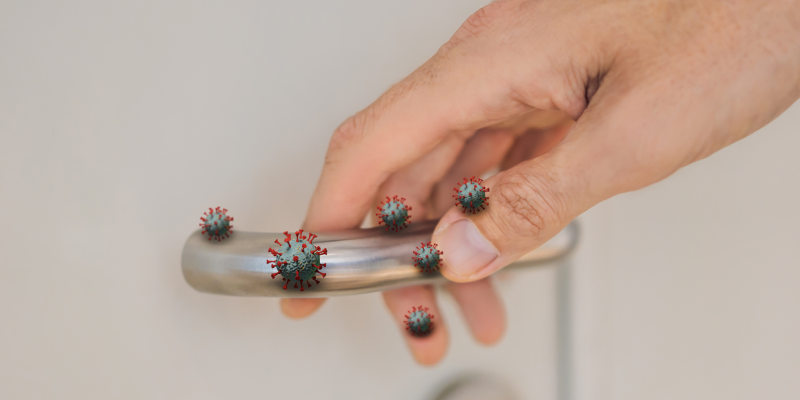
Watching Your Washrooms
Washrooms are typically hotbeds for germs and have a high risk of spreading infections. However, it’s also one of the best places to communicate that you are doing your best to maintain the highest standards of hygiene. The cleaner and drier your washrooms are, the more impressive you will be to your clientele.
- Increase deep-cleaning and disinfect with the most effective products.
- Set up clear signage with guidance for customers to maintain safety from germs.
Observe the recommended dwell time (dwell time is the amount of time a disinfectant needs to remain wet on a surface to effectively disinfect it) (3) especially when applied on high hand-touch point areas including:
- Toilets
- Urinals
- Sinks
- Dispensers
- Door handles
As part of the new normal, we all know the importance of proper cleaning and hand washing to reduce contamination and to prevent infectious disease spread.
Checklist for A Clean and Functional Toilet5
- Cubicle doors and handles are clean.
- Hand wash area is clean and tidy, with no litter.
- The toilet bowl seat and cover are intact and stain free.
- Toilet seat cleaners are provided.
- Sanitary bins for ladies’ cubicles are clean and lined.
- WC flush is functional and free of dust, dirt, and stain.
- Toilet paper dispenser is intact and replenished with toilet paper.
- Urinals for gents are functional without chokage.
- The urinal flush is functional and free of dust and stain.
- All taps and hand dryers are working.
- The hand soap dispensers are filled and functional.
- The toilet is odour free; the floor is dry and with no water leakages.
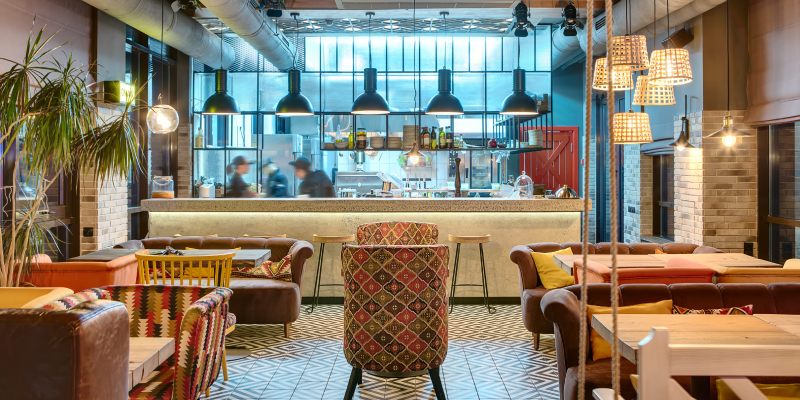
Maintain Your Hood Exhaust System
You may manage the restaurant really well, but you may be missing equipment or training to maintain the hoods, exhaust ducts and roof exhaust fans of a kitchen's exhaust system. Cleaning only the visible and easily accessible portions of a hood system is inadequate. So do consider engaging a reputable service provider to maintain the exhaust systems.
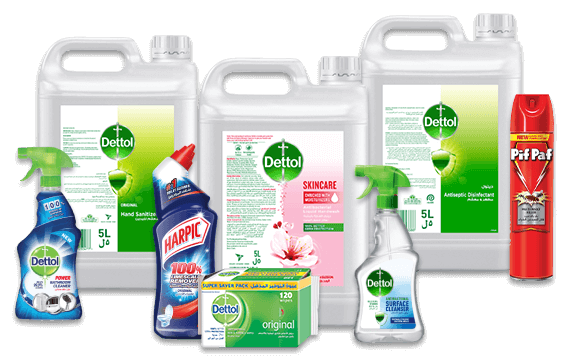
Keep Cleaning Supplies and Sanitisers in Stock
Ensuring that your restaurant has the required cleaning supplies including trash bags, paper towels and disinfecting cleaning products can help keep your restaurant in business. During the coronavirus outbreak these supplies may be in short order. Work with a reliable supplier who will guarantee and deliver these items on schedule.
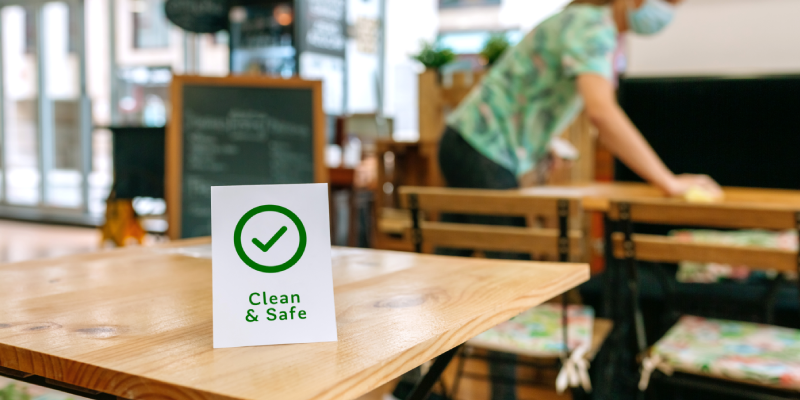
Pinpoint High-Risk Hotspots for Frequent thorough Cleaning
- Besides the washrooms, take note of frequently hand-touched areas like door handles, counters, and furniture where microorganisms are picked up.
- Larder: Food storage areas that attract pests and can provide a haven for germs to congregate.
- Menus: An online menu can also be updated easily, saving the cost of getting new menus printed and touched by many. But do clean any portable QR code for menu too.
- Payment keypads, telephone, and cashier panels
By following these steps for proper sanitation, you will be operating a safer, and cleaner environment for everyone.
Sources:
- 1. https://www.statista.com/statistics/1255923/uae-dining-out-expectations-post-covid-19-by-frequency/
- 2. https://www.statefoodsafety.com/Resources/Resources/june-cartoon-four-times-you-should-always-change-your-gloves
- 3. https://www.ebpsupply.com/blog/commercial-restroom-cleaning-guide
- 4. https://www.ncbi.nlm.nih.gov/pmc/articles/PMC3538484/
- 5. http://toilet.org.sg/docs/AssessmentChecklist.pdf
Disclaimer: All reasonable steps have been taken to ensure the accuracy of the published material on the website (“Material”), however the Material shall not be treated as advice in any manner, and no warranty or representation is provided in respect thereof. Information or advice provided on the site should be used merely as a guide rather than a definitive recommendation to adopt any specific action. In no event shall Reckitt Benckiser Arabia FZE, RB Hygiene Home Arabia FZE and/or its affiliates be liable for any damages or any other consequence arising from the use of the Material or website.
